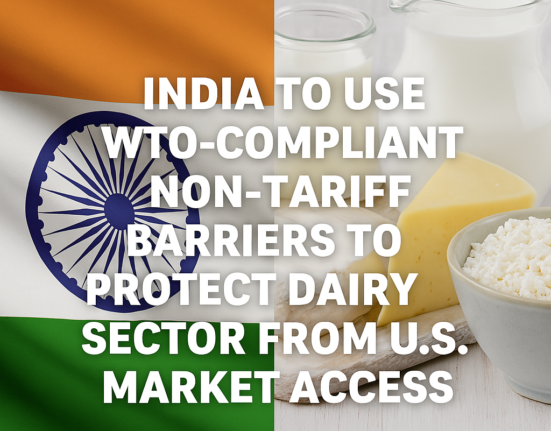FMCG Sector Anticipates 6-8% Revenue Growth by FY26, Dairy Demand Poised to Rise Significantly Amid Urban Recovery
India’s fast-moving consumer goods (FMCG) sector is projected to rebound to a 6-8% revenue growth in fiscal year 2026 (FY26), compared to the modest 5-6% growth expected in FY25. According to a recent Crisil Ratings study analyzing 82 FMCG companies—which represent a third of the industry’s estimated Rs 5.9 lakh crore revenue—this growth will primarily stem from a resurgence in urban demand, supported by stabilizing rural consumption.
Key Factors Driving FMCG Recovery
The anticipated recovery is driven by improving urban economic indicators, including easing food inflation, declining interest rates, and beneficial tax policies introduced in the latest Union Budget. Additionally, rural consumption remains robust, supported by continued government welfare schemes and increasing minimum support prices for agricultural produce.
A notable 4-6% volume growth is expected alongside a 2% uptick in price realizations as FMCG companies partially offset increased costs for inputs like palm oil, coffee, wheat, and copra by marginal price hikes across categories such as soaps, biscuits, coffee, hair oils, and tea.
Dairy Sector Set to Benefit Significantly
Within FMCG, the dairy sector stands to gain considerably from this urban resurgence. A recent report from Crisil highlighted the dairy industry’s resilience, forecasting a robust 13-14% growth in FY25 due to high consumer demand and increased milk procurement supported by favorable monsoon conditions. Further, according to Fortune India’s insights, India’s dairy market is expected to reach approximately ₹31 lakh crore by 2027, reflecting a 15% CAGR from previous years.
Growing consumer preference for value-added dairy products, coupled with increasing sales within the hospitality and food service sectors (HORECA), underline the significant market potential and rising dairy demand. Dairy players who strategically position premium, value-added products while maintaining affordability could gain a competitive edge.
Strategic Adaptations Amidst Evolving Consumer Preferences
The FMCG landscape is rapidly evolving, with increased competition from regional brands and direct-to-consumer (D2C) companies empowered by digital commerce. Traditional FMCG enterprises are responding by acquiring innovative D2C brands, expanding their digital presence, and creating customized product offerings tailored for quick-commerce platforms, which now constitute 30% of e-commerce FMCG sales.
Crisil Ratings’ Director, Aditya Jhaver, emphasized how traditional FMCG players are enhancing digital advertising to promote premium products and simultaneously expanding rural reach. These strategic pivots are critical to maintaining market position amid intensifying competition.
Profitability and Financial Stability Outlook
Despite the anticipated revenue growth, operating profitability for FMCG companies is expected to stabilize around 20-21% in FY26, following a slight decline in FY25. FMCG businesses’ solid cash flows, conservative financial management, and robust balance sheets continue to underpin credit stability even amidst inflationary pressures and fluctuating input costs.
Emerging Trends and the Road Ahead
The FMCG sector will likely face ongoing challenges, including input cost volatility, monsoon unpredictability, and shifts in disposable consumer income. Nonetheless, urban demand recovery, bolstered by supportive government policies and reduced inflation, combined with sustained rural consumption, will continue to drive growth.
Digital transformation, innovation, and balancing affordability with premium product positioning will be essential to navigating consumer preference shifts effectively.
Crisil Ratings’ Senior Director, Anuj Sethi, underscores that sustained volume recovery, particularly driven by urban consumption, remains the key factor for consistent growth in the FMCG sector over the next few years.







